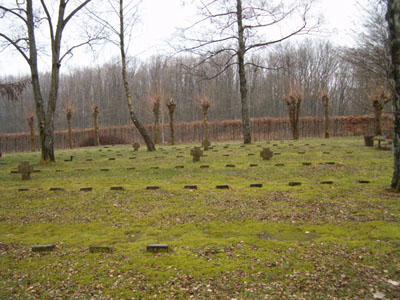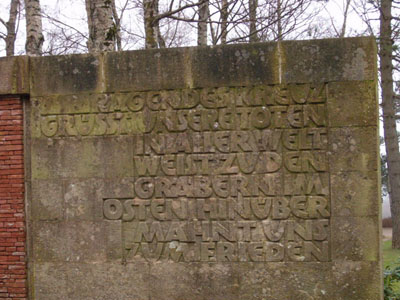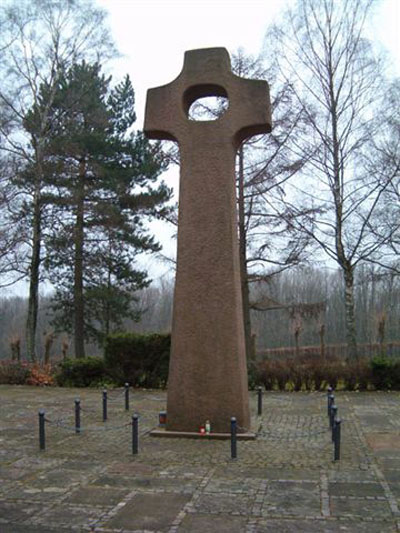German War Cemetery Weiskirchen
The Weiskirchen War Cemetery is a military cemetery located in the heart of the Hunsrück High Forest in the German federal state of Saarland, outside the town of Weiskirchen (66709), in the Merzig-Wadern district, and in the German federal state of Saarland.
A total of 786 victims of the Second World War from various nations found their final resting place at this WWII war cemetery, the youngest 3.5 years old, the oldest 85 years old.
Resting here today 2025:
687 Germans
96 Unknowns
3 Austrians
On historic ground where a Franconian burial site existed 1,500 years ago, the forest cemetery was established in September 1939 by the 79th Infantry Division of the German Wehrmacht, which was deployed to secure the border and the area in front of the West Wall.
Weiskirchen was the Wehrmacht's main dressing station in 1939/40 and the winter of 1944/45. Those who died in the hospital and those killed in action in the division found their final resting place in this memorial cemetery.
In September 1939, during the fighting in front of the West Wall, the first 28 casualties from this unit were buried here.
The majority of the approximately 127 soldiers of the 79th Infantry Division, who died across the border on French soil during the attack on the Maginot Line on May 13, 1940, and the following days between Saarlouis, Beckingen/Saar, and Merzig/Saar.
In the winter of 1944/45, 523 soldiers from various infantry divisions were also buried here. They lost their lives during the Allied offensive at the Orscholz Barrier and on the West Wall.
After World War II, until the mid-1950s, burials took place in and around the cemetery, including the reburial of the British, American, and French soldiers initially buried here, which was completed at the end of the 1950s.
During the war, the Wehrmacht's 79th Infantry Division was responsible for maintaining the graves. After the war, the Saarland Ministry of the Interior took over the maintenance of the cemetery.
The complex received its current structural form in 1950. On a plot of approximately more or less 8,000 square meters in the middle of a pine forest, there is a separate burial ground and a forecourt.
In the forecourt is a sandstone obelisk serving as a sandstone high cross and a sandstone plaque with the commemorative inscription:
✙ ROOFING CROSS ✙
✙ GREETS OUR DEAD ✙
✙ THROUGHOUT THE WORLD ✙
✙ POINTS TO THE ✙
✙ GRAVES IN THE ✙
✙ EAST ✙
✙ WARNS US ✙
✙ TO PEACE ✙
In the burial ground, there are 24 rows of graves arranged in alphabetical order along the main path to the left and right. The individual graves are marked by sandstones bearing bronze plaques bearing the names, birth dates, and dates of death of the fallen soldiers.
Annual commemorations from 1941 to the present day have been a tradition in the Weiskirchen community and take place after the war on Repentance and Prayer Day to commemorate and honor all fallen soldiers.
✻ A PERSON IS ONLY TRULY DEAD WHEN NO ONE THINKS OF HIM ANYMORE ✻
Bertolt Brecht
Do you have more information about this location? Inform us!
Source
- Text: Siegfried Kräker
- Photos: B. Valgaeren (1), Nico van Hullenbusch (2, 3, 4, 5)









